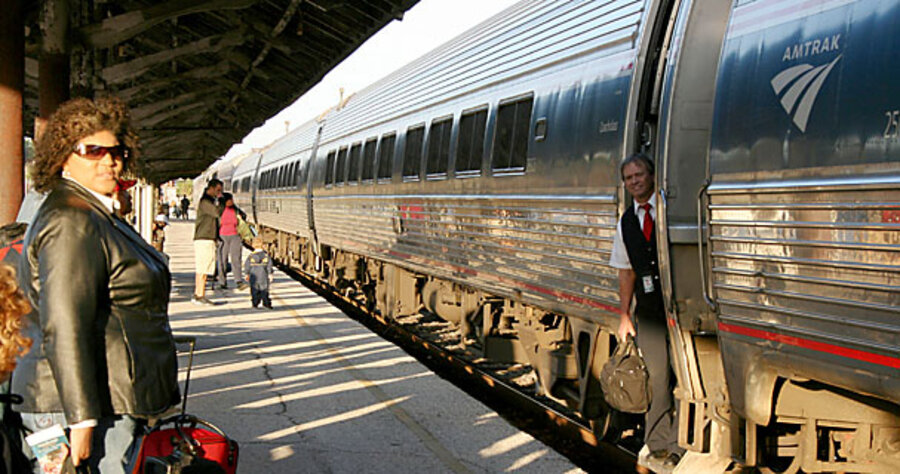An Amtrak comeback?
Loading...
Things are looking up for Amtrak. The House overwhelmingly approved nearly $15 billion for the national passenger railroad Wednesday, more than doubling its funding, just as ridership is at the highest point in its 37-history.
Wednesday's bipartisan bill passed 311-104, a wide enough majority to override the veto that the White House has promised, saying that the bill failed to hold Amtrak accountable. Similar legislation has also passed in the Senate, also by a veto-proof majority.
The House bill called for the creation of a high-speed rail between New York and Washington, a provision that the Senate bill lacked. The Associated Press details the difference between the two versions:
Unlike the Senate version, the House bill includes a requirement for the Department of Transportation to seek proposals from private companies to create a high-speed service that would take travelers from Washington to New York City in two hours or less. The idea has long been championed by [Florida Republican and prominent Amtrak critic John] Mica, who says the United States must catch up with European and Asian countries on high-speed rail travel.
Critics say the proposal would undermine Amtrak by peeling off its most valuable asset, the Northeast Corridor.
But Pennsylvania congressman Bill Shuster said provisions such as the one that open the door to private investment should help ease the concerns of fellow Republicans who have balked at supporting Amtrak.
But those provisions could complicate things when the House tries to work out a compromise bill with the Senate.
The bill comes just as ridership is hitting a record high. According to Reuters, the railroad saw ridership up 12.3 percent from a year earlier, and ticket sales up 15.6 percent. This is the sixth straight year of record numbers, Amtrak President Alex Kummant told the news agency. Mr. Kummant attributed about half that growth to rising gas prices.
Amtrak has long been regarded as a struggling entity. Indeed, a Google search for "beleagured" and "Amtrak" brought up almost 9,000 hits. And that's without even spelling "beleaguered" correctly. According to a sidebar to the Reuters story, Senate Republicans report that Amtrak loses more than $700 million annually.
According to Reuters, Amtrak's passengers amount to less than 1 percent of the America's traveling public. Britain, France and Germany, by contrast, each have passenger rail systems that account for about 6 to 8 percent of passenger miles traveled.
Amtrak's trains are significantly slower than their foreign counterparts. The Acela Express, which serves the Northeast Corridor, has an average speed of 82 miles per hour, although it can hit 150 miles per hour on stretches of track in Rhode Island and Connecticut. Reuters notes that "Japan, France and Germany have developed nationwide rail systems capable of speeds of 150 mph to 185 mph on dedicated tracks with sophisticated signaling systems designed for high-speed trains."
In a Q&A with Reuters, Amtrak's Mr. Kummant said that the money will fund some improvements, but it's not nearly enough to bring America's passenger rail up to the standards of the rest of the industrialized world:
"Clearly, we would all love to have TGV-style 200 mph trains. But there are a couple of things there. Those are tens of billions of dollars of investment. So the question becomes: How do we find the public, financial and political lift for that?' We get beaten up every day over raising an appropriations request for $40 million. And in the next breath we are asked 'Well, when are you going to go high-speed?' And the answer is, 'If you have $40 billion we will talk about it.'
"So there has to be a genuine political will and genuine political headroom to do that. Not to go too far afield here, but it begs the overall question on 'When is the federal government going to get serious about fundamental spending on infrastructure in this country like it did in the 1950s and early 1960s?' We are way below the GDP levels of spending as a percentage of the federal budget. That's a question for people that are in a higher pay grade than I am in terms of the political realities here. But that's still what it comes back to."





